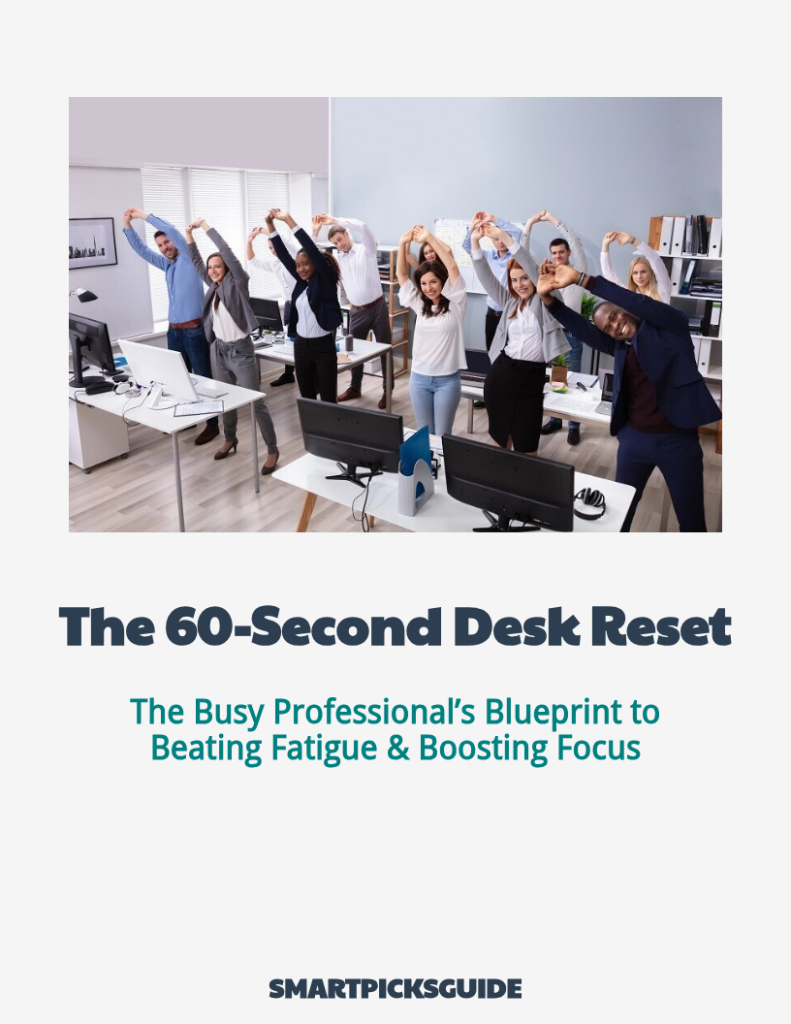
What If Just 1 Minute at Your Desk Could Change Everything?
Sign up for FREE membership and receive:
Exclusive Guide: “The 60 Seconds Reset” – The Busy Professional’s Blueprint.
Articles and newsletter to help you beat desk fatigue, eliminate aches, and unlock your most productive workdays… without ever leaving your desk.
You notice the big pains. The lower back twinge, the neck stiffness, the headache building behind your eyes.
But what about the tension you don’t feel? The subtle, persistent strain that never registers as pain but silently drains your energy hour after hour?

Your dominant hand, the one controlling your mouse or trackpad right now is likely the most overlooked source of workday fatigue. It’s been quietly holding tension patterns that affect your entire upper body without ever sending clear distress signals.
This isn’t about carpal tunnel or wrist pain. Those are the alarm bells that ring only after prolonged neglect. I’m talking about something more subtle: the constant low, level muscle engagement that never fully releases during your workday.
Consider this: your mouse hand typically holds the same position for hours, making tiny, precise movements while maintaining constant mild tension. The muscles in your hand, wrist, and forearm are never fully engaged (which would trigger fatigue warnings) but never fully relaxed either.
Ergonomists call this “static loading”, when muscles maintain partial contraction for extended periods. While it doesn’t feel painful in the moment, it creates cumulative drain that affects your entire system.
Here’s what’s happening beneath your awareness:
Those partially contracted muscles gradually restrict blood flow to the area. Reduced circulation means less oxygen and more waste product accumulation. Your nervous system registers this mild distress, diverting energy to manage it. The tension pattern doesn’t stay isolated, it gradually travels up your arm to your shoulder, neck, and even jaw.
By afternoon, what started as imperceptible hand tension has become a system, wide energy leak.
Perhaps most surprisingly, this physical pattern affects your cognitive performance. When your body is managing multiple areas of mild tension, it diverts resources from other functions, including the high level thinking your work demands.
That midday mental fog might not be about your brain at all. It might be your body’s response to accumulated physical tension it’s been managing for hours.
The standard advice, better ergonomics, occasional stretching, addresses the surface issue. But it rarely resolves the underlying pattern that keeps recreating the tension within minutes of returning to work.
What if you could reset this pattern before it escalates into a recurring, wide fatigue? What if a minute of your time could recover hours of lost energy?
Our 60 Second Desk Reset Guide includes specific techniques that target this hidden tension in your dominant hand. Techniques designed not just for momentary relief but to retrain your nervous system’s default patterns.
Curious how releasing tension you don’t even feel could transform your workday energy? Our guide might be the missing piece you’ve been searching for the difference between powering through fatigue and preventing it altogether.
